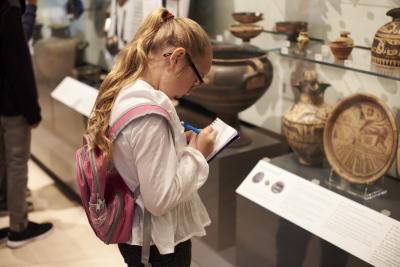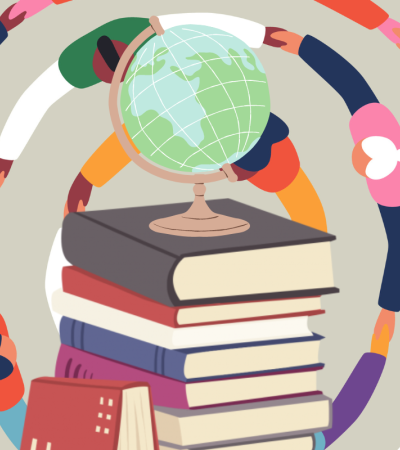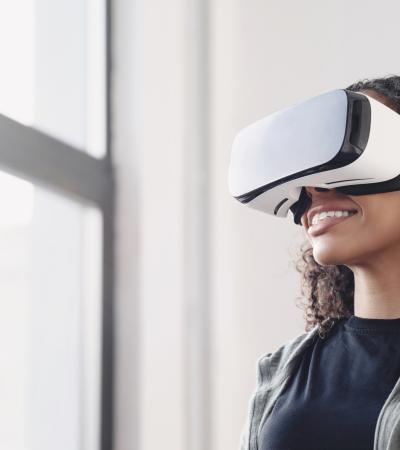In November 2022, Programming Librarian shared an article about why programming library workers should get to know their state humanities council. With these ideas in mind, we’ll talk about why libraries are such an important community resource for cultural programming in their communities, an idea that ALA recently shared at the National Humanities Conference (NHC2022).

Public libraries are often anchor institutions in their communities. Proximity is part of the reason — most Americans live within a few miles of a community library. Trust and social connections are another part of the picture. In a 2017 White Paper, the Urban Libraries Council compiled information from several sources to demonstrate that libraries are places of high trust, inclusivity and sites to build social capital.
At NHC2022, Melanie Welch, director of the ALA’s Public Programs Office; Brian Russell, a project director with ALA; Hayley Prihoda, program coordinator with the United States Holocaust Memorial Museum and Judith Bergeron, director of the Smithville Public Library in Texas shared in a panel discussion on “Public Libraries: An Oft-Overlooked Humanities Programming Partner.” Programming libraries that are adept at creating partnerships and community engagement can also be a place to build cultural capital as well.
Why libraries?
What is it about libraries that make them such a strong programming partner for cultural engagement? One of the first thoughts that come to mind is the sheer number of libraries and library visits across the country. In 2019 (pre-COVID), ALA reported in the “State of America’s Libraries” report that there are more than sixteen thousand public libraries in the U.S. – that’s more than Starbucks outlets!
In addition, Americans visited public libraries over 1.4 billion times – keeping libraries at the top of the most common cultural activities in which Americans engage. That number is greater than the number of folks who visited movie theaters or who attended professional sporting events. The high number of visits is no doubt a function of the proximity and trust concepts that help make libraries become community anchors.
Libraries are also a reflection of the communities they serve. Not all communities look alike – differing in backgrounds, education levels, socio-economic status, values or other interests and identifying qualities. Libraries, however, can build relationships within those communities which provide avenues for engagement as well as needs and asset assessments and bring equity resources to the communities. Library workers themselves are part of those communities, especially in small and rural libraries, and therefore contribute to the collective knowledge that helps strengthen communities. In larger libraries in urban and suburban settings, the branch libraries often differ from one another, even within the same library system. This is often because they reflect their neighboring communities, thus enhancing their positions as community connectors.
In partnering with humanities councils or other cultural organizations, libraries can localize programming to help cultural centers reach more diverse audiences – something that may be missing from academic or museum venues. Traditional cultural venues may be out of reach for many Americans, whether it is the physical distance for rural residents, the cost of entry to ticketed events, or just the lack of comfort in an academic or museum setting, but libraries have a place to help connect their communities with cultural resources.
For example, partnering with libraries to bring the U.S. Holocaust Memorial Museum out of Washington, D.C. to communities across the country with the Americans and the Holocaust Traveling Exhibition has enabled libraries to highlight local history connections demonstrate the relevance of this history, and cultivate spaces for community reflection. Communication with both the community members and the potential cultural partners is important in building these partnerships, and programming libraries are in an ideal position to help make these connections.
Other take-home messages from NHC2022
In one of the panel presentations at NHC, the Pennsylvania Humanities Council shared a recent report covering how active humanities programs are in the nation. This report identified three major themes in these programs: storytelling, identity and creating empathy and understanding. Don’t those themes ring true in many libraries across the country? Why not continue to do what libraries, especially programming libraries, do naturally? By partnering with cultural councils and organizations, we can all bring our inherent strengths to the table, reach more people, and continue to build and strengthen our communities. In that same panel, Ben Fink, a consultant with the “We Own What We Make” collective, shared the idea that to successfully engage a community, one must identify and work through the “community centers of power” rather than the logistical centers such as City Hall or elected officials. He talked about the people in the neighborhoods or in their church groups who help facilitate the humanities themes.
As a trusted, neighboring and reflecting institution, your library is in a place to become one of those community centers of power, if it is not already one.
Another panel, Community Healing through the Humanities, shared how the humanities (and the arts) can be used to support community healing and resilience. The presenters were representatives of humanities leaders in areas that have recently experienced violence and hate-based trauma: Charlottesville, Virginia, Minneapolis, Minnesota and Uvalde, Texas. In Uvalde, in particular, the state humanities council, Humanities Texas, is working with the Uvalde Public Library to help archive memorial artifacts and tell the stories of the community members. While listening to these shared stories, I couldn’t help but think of the Ferguson (Mo.) Municipal Public Library as a support center, including arts programs, in the wake of the shooting of Michael Brown. These are just a few examples of libraries doing what they do, and in partnership with cultural organizations, to build and strengthen community.
Another great panel presentation, Responsive vs. Reactive: Navigating Library Book Bans, discussed how humanities councils can support cultural partners who are facing the stress and instability brought on by book challenges and programming protests. If you are working in one of the libraries that is heavily targeted by people who wish to restrict the Freedom to Read, you might find help from cultural partners in your area.
If you step outside your library and look from the community perspective, you will likely see a trusted institution that has many of the tools to help bring connections and cohesion to the community that you serve. Don’t be overlooked as a programming partner! Reach out to your cultural centers today and invite them to work with you. And keep an eye out for ALA cultural program funding opportunities, such as the Let’s Talk About It! series.
If libraries and cultural groups all do what we naturally do, but as partners working together, we will all be stronger, and more resilient. Let’s do it all together now.
Funding for this article has been provided by the National Endowment for the Humanities (NEH) as part of the American Rescue Plan: Humanities Organization Grant.


